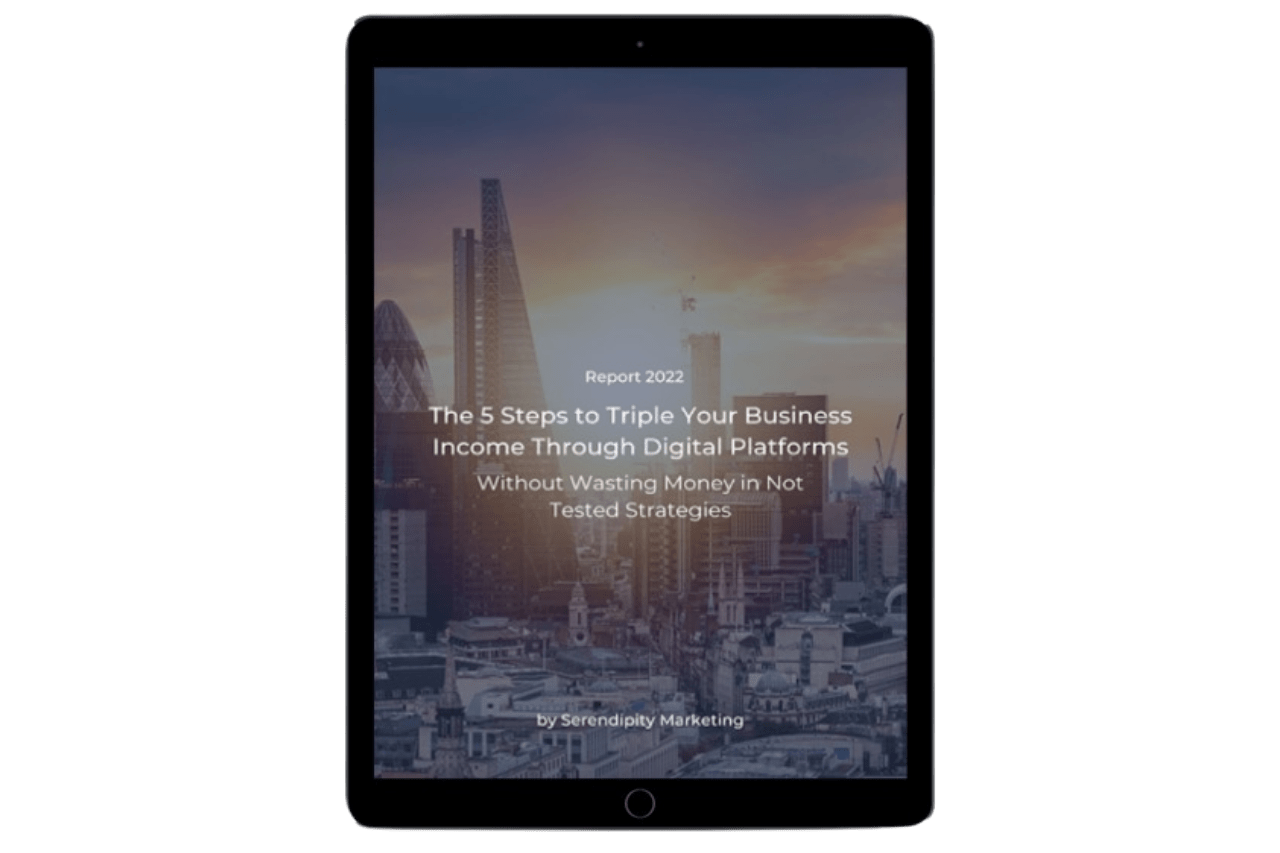When you're getting a new website off the ground, knowing exactly what SEO metrics to keep into account will make or break your success.
But with all the metrics that Google Analytics and other platforms offer, it's easy to get lost.
So, you know what? In this article, we are going to keep it simple so that you can easily succeed.
We are about to break down 9 SEO metrics that you need to measure when launching a new website.
Hi there, and welcome back to Serendipity Marketing. We're a digital marketing agency with a mission to help small businesses grow by applying psychology to their marketing strategies.
Before we get started, please go ahead and follow us on LinkedIn, Facebook, or Instagram.
So, let-s get straight to the point.
1. Loading time
The first one of the SEO metrics you need to monitor is loading time.
Believe it or not, it has a huge effect on SEO and user experience and, as such, it will make or break your website's success.
You know, we got to read an interesting article that was breaking down some stats from Walmart.
Did you know that every second that they saw in the loading time improvement, they saw roughly a 1 or 2% increase in conversions?
That isn’t bad at all, don’t you think so?
So, the loading time not only affects your search engine rankings but can also affect your conversion rates.
2. Average session duration
The second SEO metric that you need to keep track of is dwell time or at least average session duration in Google Analytics.
If people like your content, they'll spend more time consuming it.
If they don't, then you're kind of screwed. And a simple way that you can improve this is by cross-linking your content together.
So, for example, if we have an article that breaks down SEO and an introduction to SEO and we break down all the factors of SEO such as things like link building, and considering we have an article on link building, we'll link it to that article and that will help with this metric.
That’s because, if the article is engaging, users will appreciate the possibility to get the additional information and will most likely click to see the other article, getting to spend more time on your web pages.
3. Average time on page
The next SEO metric is the average time on a page. Check this metric off for individual pages to see what's working and what's not working.
You’ll probably see that you have some pages that hit it out of the park, and you'll have some pages that just do terrible.
You want to take the pages that are doing extremely well and figure out what all these pages do have in common.
Also, look at all the pages that aren't performing well and try to understand what they have in common as well.
This will give you the idea of what you should do more of and what you should do less of.
4. Percentage of returning visitors
The next SEO metric we want you to look at is the percentage of returning visitors and the early days, especially when your website is brand new, what you'll find out is that you'll have a ton of returning visitors.
And that’s because that will be you going back to your site or your friends going back to your site.
As your site grows and you start getting some traffic from other sources, you'll find that you have barely any returning visitors.
But as you grow your brand, you'll find that your returning visitor count will continually go up and up and up.
In the early days, you'll live and die by returning visitor numbers.
For example, if you're getting all these visits but you can't figure out how to get any of them back, ensure your trafficking, maybe it can just be growing month over month. It's growing because you're adding new people, you have a big leaky bucket.
You need to solve that because the easiest way to grow is to retain the people that are already on your site.
And you can do a few things to get people back to your site such as collecting emails so you can email people every time you have updates or new content.
Do push notifications, that way every time you have a message to send out.
You can also leverage messenger chats such as MobileMonkey or mini chat.
5. Referral traffic
The next one of the SEO metrics we want you to look at is referral traffic. Organic traffic won't be great in the beginning but if you can get referral traffic in order to get people to your site, if they're from relevant sites, you can get sales and conversions.
Knowing what is the best referring traffic sources will help you fine-tune your marketing strategy.
We look at referring traffic for two main reasons.
1. The more referring traffic we are getting usually means the more backings we are getting which means the overall time that our organic traffic is going to increase.
2. We like to see which sites cause the most conversions as then we need to know to focus all our efforts on those sites that are not just driving traffic, but they're driving sales.
Because what’s the point of traffic that doesn't convert into sales? It is useless, isn’t it?
Alright, now before we move on with the next SEO metrics to focus on when launching a new website, have you ever thought about how much you should invest in marketing to generate constant business growth? Click the button below to calculate the ideal marketing budget you should allocate for higher visibility, engagement, and profit.
How much should you invest in Digital Marketing?
6. Organic traffic
The next SEO metric we want you to track is organic traffic.
In the early days you're not going to rank for much so what you want to do is you want to look for your rankings and if they're climbing up.
So, you may be in the 100s spot, then you go to the 50, then you go to 10, and as you keep climbing, you'll see your traffic going up as well.
So, when you're looking at organic traffic, look at the total number, not just each individual keyword, because you can see as a whole, are getting more traffic or less traffic.
You can do this through Google Search Console and it can track your rankings as well as your search traffic on a daily basis for you.
That will give you an idea of what's working, what's not, what keywords are driving impressions, and what pages are working so you get a good idea of what you should do more of and what you should do less of.
7. Bounce rate
The next thing we want you to track is the bounce rate.
For organic traffic, anything around 50% or lower is good, while anything above that level means that you need to make improvements to your site.
Bounce rate isn’t just about the content but it's about the experience.
If your site loads slow, you're going to have a higher bounce rate. If you're not interlinking your pages together, you're going to have a higher bounce rate.
Bounce rate is an important metric to measure because it tells you what users think of your website.
If you have a low bounce rate, it means that users like the content on your site.
8. Email opt-ins
The next SEO metric is email opt-ins. Email subscribers will be one of your best sources of traffic.
Why? It won't bring in the most amount of people, but it'll bring in a lot of your paying users, your customers, and your subscribers.
Whether you're selling products or services, emails are effective.
9. Pages per session
The last one of the SEO metrics we want you to track is pages per session.
You know, if people are coming to your site and they're sticking around for 2, 3, 4, or 5 pages per session, that's good.
If they're sticking to 1 point something, that's pretty low.
Look at the behaviour flow in Google Analytics to see exactly where users are navigating to.
This will inform you and tell you what's working and what's not.
This will tell you what you need to do to get more pages per session.
That behaviour flow is one of the best reports that we love and with it, you'll get a better idea of what changes you need to make.
If you need help with your SEO metrics and SEO marketing to grow your business in terms of visibility, engagement, and profit, contact us today and speak with one of our digital marketing experts to see how we can build the bridge between the point you’re standing at right now and your goals.


